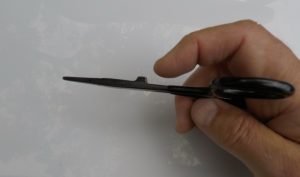For the new fly angler, the forceps (aka hemostat) is an easily overlooked, critical tool. Do not make a quick purchase of the cheapest thing you can find! Examples of the wrong choices include medical hemostats or a set of needle-nose pliers masquerading in the role. Neither of these poor imitations has the required range of embedded tools needed to deal with the challenges of fly fishing (Yes, there are other problems beyond casting!). Medical hemostats are typically small stainless steel versions of a fishing forceps with only one purpose – to grip. The handles on medical hemostats are skinny and bend without being able to put the necessary pressure on a split shot. Although strong, needle-nose pliers share the same singular purpose with the additional negatives of rusting quickly when exposed to water, being far too heavy to carry and no latch point to connect the handle to a zinger.

Even so, forceps marketed as “fishing forceps” or “scissors clamps,” may not have all the required features. It is well worth the additional cost to get the fully capable version of this essential tool. A good pair of forceps must be solidly made out of stiff, rust resistant material. The best example of good fishing forceps are the ones made by Orvis. These come in two models; the power jaw ($15) and the power jaw + scissors ($20). Beyond construction, the forceps must be able to do the following things to be useful on the stream:
First, it must have a locking clamp near the finger holes. Why does it need to lock? Most anglers carry the forceps attached to a zinger, and, without the clamp, it will jingle and jangle, swinging from side to side, in the open position. One of the first truths every fly angler learns is that if there is a way to get line tangled, it will happen; keep the forceps closed and tucked into a nearby vest pocket.
 Second, the most critical feature of the good pair of forceps is a built-up section providing additional leverage to squeeze split shot tight onto tippet. Given the length of the nose, it’s hard to get decent leverage all the way at the tip. However, a forceps with the built-up area near the pivot point allows the force to concentrate; providing a firm clamp of split shot to the tippet.
Second, the most critical feature of the good pair of forceps is a built-up section providing additional leverage to squeeze split shot tight onto tippet. Given the length of the nose, it’s hard to get decent leverage all the way at the tip. However, a forceps with the built-up area near the pivot point allows the force to concentrate; providing a firm clamp of split shot to the tippet.
Third, with many flies being mass produced overseas, quality can be an issue. Mass-produced flies routinely cover the eye of the hook with thread. Rather than trying to clean this out with the pointy part of another hook, leverage the pin built into the jaw of a good forceps. The pin matches with a hole on the opposite side. Merely place the eye of the hook on the pin, squeeze gently shut and rotate the fly to remove the offending thread.
Fourth, the forceps should have a narrow taper to a blunt point. A smooth exterior and tapered end facilitate using the forceps as a knot tying assist tool. Check out the next section for a tutorial on many of the knots you can tie quickly using a forceps, including the clinch knot, Trilene knot and Kreh loop knot for attaching the fly to tippet and the surgeon’s knot for splicing tippet.
Fifth, an optional feature, but nice capability is to have a built-in line cutter/scissors as part of the forceps. Even though this is not critical since a fingernail clipper type line cutter is easy to use and quick to grab, it’s handy nevertheless.
 The final application is to release fish. This is where a smooth taper to a blunt point is necessary. The dull point protects the fish from further injury while working to free the hook. As always, I encourage everyone to mash down the barb when fishing for wild trout or stocked trout you intend to release. As a side note, you should not feel guilty about keeping a stocked fish. In many jurisdictions, the wildlife folks stock fish into streams that are cold in the spring and fall, but warm to the point of trout mortality in the heat of the summer. If fishing one of those locations, keeping a fish is very appropriate and probably encouraged.
The final application is to release fish. This is where a smooth taper to a blunt point is necessary. The dull point protects the fish from further injury while working to free the hook. As always, I encourage everyone to mash down the barb when fishing for wild trout or stocked trout you intend to release. As a side note, you should not feel guilty about keeping a stocked fish. In many jurisdictions, the wildlife folks stock fish into streams that are cold in the spring and fall, but warm to the point of trout mortality in the heat of the summer. If fishing one of those locations, keeping a fish is very appropriate and probably encouraged.

